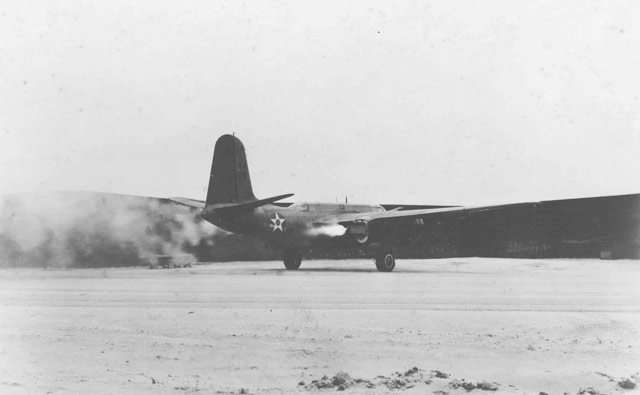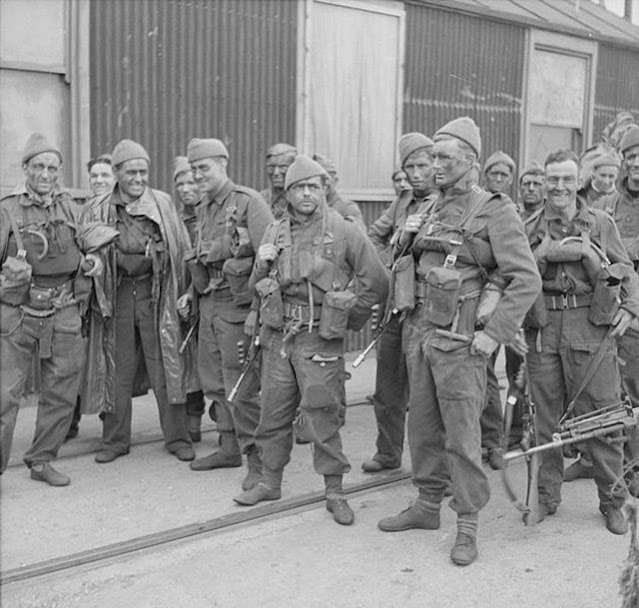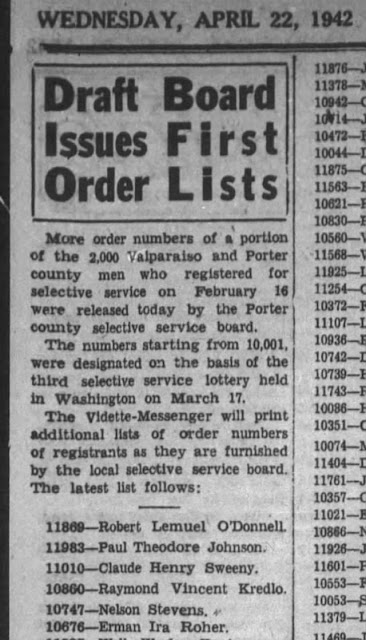Wednesday 22 April 1942
 |
| Japanese light cruiser Naka at the Seletar Naval Base, Singapore, 22 April 1942. It is showing battle damage amidships and listing after being torpedoed by US Navy submarine USS Seawolf off Christmas Island on 1 April 1942. |
Battle of the Pacific: To defend northeast Australia, which is wide open to a Japanese invasion, General Douglas MacArthur's South West Pacific Area command on 22 April 1942 creates Task Force 44 from the ANZAC Squadron. The first commander is Rear Admiral John Gregory Crace (Royal Australian Navy). Task Force 44 becomes instrumental in the defense of Port Moresby in the Australian Territory of New Guinea.
Battle of the Indian Ocean: While the British have slipped out of some traps recently in Burma, the Japanese 15th Army remains in hot pursuit. They advance toward Lashio, the eastern terminus of the Burma Road, with the intention of stopping Lend-Lease supplies to the Chinese Nationalists. The growing threat forces the new US 10th Air Force to begin evacuating military and civilian personnel and their supplies from Burma to India.
 |
| A US Army Air Force Douglas A-20A on 22 April 1942 engaged in the first static test run of liquid-fuel jet units. They are installed in the nacelles for Jet-assisted Takeoff (JATO) (US Air Force). |
Eastern Front: The Germans, having hacked a tenuous corridor through to the Demyansk pocket at Ramushevo in Operation Brückenschlag ("Bridge-building"), begin moving the first supplies to the 100,000 or so German troops there. The Soviets, shocked at this brilliant German success, are slow to react. They slowly begin preparing an offensive against the corridor which will not be ready before May. General Franz Halder makes a cursory reference to this in his war diary, noting "the gap between X [the relieving troops] and II Corps [the trapped troops] has been closed, but the link needs more strengthening."
Halder next turns to the situation on the Volkhov, where the situation is reversed and the Soviets are trapped in a pocket. He writes that "the many enemy penetrations have again been eliminated. Volkhov river covered with floating ice." This bodes ill for the trapped Soviet forces, which include Soviet Second Shock Army and its promising young commander, General Vlasov.
In Crimea, Soviet General Kozlov now is under new orders from Premier Joseph Stalin to prepare yet another offensive - which would be the fifth - to break through to the trapped forces at Sevastopol. However, while the Soviets have three armies - the 51st in the north, the 44th in the south, and the 47th in reserve - and outnumber the Germans 2-1, the Soviet fighting troops have been decimated during the fighting and are in no position to attack. Stalin's orders, though, help to prevent the institution of a defense-in-depth orientation that would secure the Soviet hold on the territory that they still hold. German General Manstein, for his part, is busy preparing his own offensive, Operation Trappenjagd ("Bustard Hunt"), to eliminate the Soviets from the Kerch region. He is getting help from a massive Luftwaffe buildup within Fliegerkorps VIII under the command of Wolfram Freiherr von Richthofen, a very competent air strategist.
 |
| Red, white, and blue balloons are released in Times Square, New York, to publicize the U.S.O. military service organization on 22 April 1942 (Photo courtesy of The New York Times). |
European Air Operations: Ending a lull in operations, British Bomber command sends 64 Wellington and 5 Stirling bombers to bomb Cologne, Germany. The bombers are guided by the Gee direction-finding apparatus and the crews are ordered as a test to rely on that equipment rather than visual observations. The results are typical, with some bombs dropped over the target while others are dropped as far as ten miles away. There are four deaths and eight injured in the city with minor damage to industrial targets. The RAF loses two Wellington bombers. In other operations, 23 bombers attack Le Havre, 63 aircraft lay mines off of Germany and Denmark, and there is one leaflet flight over France. Two of these bombers, a Wellington on the Le Havre raid and a Hampden laying mines, are lost.
 |
| "WU Direct BAD/DN Transmitting and Receiving Teleprinters in operation at the Admiralty." © IWM A 9269. |
Battle of the Atlantic: U-201 (Kptlt. Adalbert Schnee), on its sixth patrol out of Brest, torpedoes and sinks 7217-ton British freighter Derryheen southeast of Cape Hatteras, North Carolina, US. All 51 men aboard survive, rescued by UK freighter Lobos.
U-201 also torpedoes, shells, and sinks 6609-ton US passenger ship San Jacinto southeast of Cape Hatteras. There are 14 deaths and 169 survivors. Destroyer USS Rowan rescues the survivors on the 23rd.
Soviet submarine M-173 (Lt. Cdr Terekhin) sinks 3323-ton German freighter Blandenese (formerly French ship Ange Schiaffino) in the Barents Sea off Kirkenes, Norway. There are 45 survivors and one death.
A big part of the Battle of the Atlantic is rescuing survivors of sunk ships. There are multiple rescue operations underway today. US destroyer Bristol (DD-453) rescues all 35 survivors of US freighter West Imboden (sunk by U-752 on 20 April), destroyer Rowan (DD-405) rescues 18 survivors from US freighter Steel Maker (sunk by U-136 on 19 April), and British freighter Tropic Star rescues the survivors of US freighter Pipestone County (sunk by U-576 on 21 April). While this may seem like the "small change" of the war compared to tales of sinkings and bombings, it's hugely important to operations and the men involved.
Battle of the Mediterranean: U-81 shells and sinks 122-ton Egyptian sailing vessel El Saadiah off Palestine.
On Malta, the Luftwaffe already has destroyed almost all of the Spitfire fighters ferried to the island recently. There are at most only 7 of the 46 fighters still operational. Luftwaffe raids occur throughout the day and the Spitfires rise in defense of their own airfields, with two of the fighters crashing on landing (pilots safe). This period of time is known as "Malta's darkest hour."
Battle of the Black Sea: A German tugboat hits a mine and sinks in Odessa Harbor.
 |
| "Men of No. 4 Commando after returning from a raid on the French coast near Boulogne, 22 April 1942." © IWM H 18957. |
Special Forces: Operation Abercrombie, a two-hour Commando landing near Boulogne, ends without incident. The main objective, a searchlight array, is not reached, but there is only one casualty (a commando shot through the ankles by a beachhead sentry). All Germans encountered scatter quickly and, apparently, they suffer no casualties. The main advantage of this sort of inconclusive operation is that it gives the Allies experience in landings and training for the troops.
Partisans: The first phase of Operation Trio, the Axis anti-partisans advance to the Drina in Yugoslavia, continues with some success. However, the main effect of the operation is that it is having the unintended effect of revealing cracks within partisan unity that greatly helps the Axis forces. The monarchist Chetnik forces have little in common with the other partisan units, many of whom are communists. This fault line explodes as the disparate Axis forces display much more unity.
Chetniks, under attack from the Ustaše Black Legion, avoid combat with German units and allows them free passage to attack partisans further back. The partisan main detachments likewise avoid fighting the Black Legion and instead attack the Chetniks, who supposedly are on their side. Some Chetnik troops sign on as Italian auxiliaries to the 5th Alpine Division "Pusteria" and help the advance toward Čajniče. There is brewing pro-Chetnik sentiment within the main partisan detachments that is causing some defections, such as within the Romanija Partisan Detachment. The fighting increasingly becomes a murky political stew that descends to a primal tribal level which transcends the overarching concept of "Allies" and "Axis." While the partisans can be very effective when they work together, every partisan unit is out for itself and has an agenda based on ancient grievances, and many partisan units themselves are rent with internal conflicts due to widely varying allegiances.
 |
| "Naval Torpedo Station, Firing Pier, North end of Gould Island in Narragansett Bay, Newport, Newport County, RI." This newly built complex is used for testing torpedoes, with the firing pier at the extreme right. The US Navy badly needs this facility because there are increasing reports during the first year of World War II of defective torpedoes. These issues are not fixed until mid-1943 (Library of Congress). |
American Homefront: Gasoline rationing picks up steam. The Office of Price Administration (OPA) limits motorists in 17 eastern states to no more than 21.4 US gallons (17.8 Imperial gallons or 81 liters) of gasoline per week beginning 15 May. This is partly a consequence of huge losses of tankers off the east coast of the United States during the Kriegsmarine's Operation Paukenschlag ("Drumbeat").
There is some lingering pro-German sentiment in the tristate area. State and federal authorities raid gathering spots in Union City, Hoboken, and other New Jersey localities that celebrated Hitler's 20 April birthday.
Universal Pictures releases "Saboteur," an Alfred Hitchcock thriller starring Robert Cummings, Priscilla Lane, Otto Kruger, and Norman Lloyd. David O. Selznick, the producer of "Gone With The Wind," gets the project in motion but it eventually winds up at Universal for various creative/financial reasons. Priscilla Lane is borrowed from Warner Bros. and has to finish "Arsenic and Old Lace" before filming her scenes for this film. The film, which began filming in December 1941, includes one famous scene showing the capsized French liner "Normandie" in New York Harbor with a clear implication that its February 1942 sinking was due to sabotage. The climax set in the Statue of Liberty becomes one of Hitchock's most famous monumental settings, which later include Mount Rushmore and the United Nations, among others. "Saboteur" is a financial and critical success and is often considered a precursor to Hitchcock's more famous "North by Northwest" (1959).
 |
| Draft orders, such as these in the Vidette-Messenger of Porter County, Valparaiso, Indiana of 22 April 1942, are going out all across the United States. |
April 1942
April 1, 1942: Convoys Come to the USAApril 2, 1942: Doolittle Raiders Leave Port
April 3, 1942: Japanese Attack in Bataan
April 4, 1942: Luftwaffe Attacks Kronstadt
April 5, 1942: Japanese Easter Sunday Raid on Ceylon
April 6, 1942: Japanese Devastation In Bay of Bengal
April 7, 1942: Valletta, Malta, Destroyed
April 8, 1942: US Bataan Defenses Collapse
April 9, 1942: US Defeat in Bataan
April 10, 1942: The Bataan Death March
April 11, 1942: The Sea War Heats Up
April 12, 1942: Essen Raids Conclude Dismally
April 13, 1942: Convoy QP-10 Destruction
April 14, 1942: Demyansk Breakout Attempt
April 15, 1942: Sobibor Extermination Camp Opens
April 16, 1942: Oil Field Ablaze in Burma
April 17, 1942: The Disastrous Augsburg Raid
April 18, 1942: The Doolittle Raid bombs Japan
April 19, 1942: British in Burma Escape
April 20, 1942: The Operation Calendar Disaster
April 21, 1942: Germans Relieve Demyansk

No comments:
Post a Comment